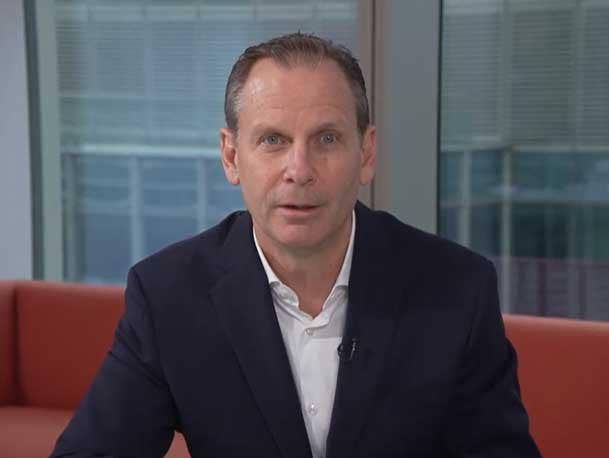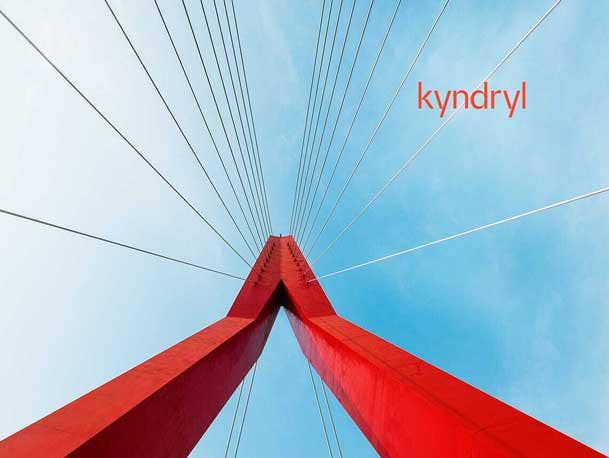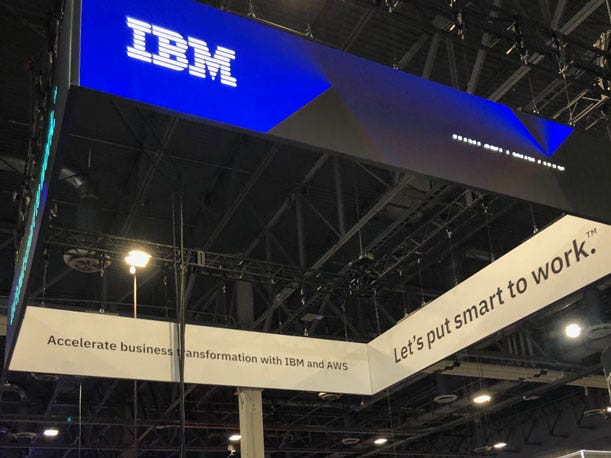Kyndryl CEO: Reselling ‘Other People’s Equipment’ Was ‘Empty Calorie Revenue’
‘What we’ve been talking about, particularly this year, is engineering a decline in revenue to get rid of either low-[margin] or no-margin businesses that we inherited in the [spin-out from IBM]. ... We inherited a business [from IBM] that was basically reselling other people’s equipment. And we’re taking that down dramatically this year because there’s nothing in it for us,’ Kyndryl Chairman and CEO Martin Schroeter tells CRN.

Global IT infrastructure services provider Kyndryl late Tuesday reported a strong fiscal second quarter of 2024 despite a 3 percent decline in revenue and a net loss of $142 million.
Investors agreed, driving the New York-based company's shares up 1.11 percent by the close and another 12.44 percent in after-hours trading.
The reason for the optimism came from two places, said Martin Schroeter, chairman and CEO of Kyndryl, which is ranked No. 8 on the CRN 2023 Solution Provider 500.
[Related: Kyndryl CEO: Moving Out Of IBM’s Shadow With $1B In Pipeline]
The first, Schroeter told CRN, was the fact that Kyndryl has “engineered” a decrease in revenue that resulted from product sales and contracts left over from two years ago this month when Kyndryl was spun out of IBM into a stand-alone company.
“We inherited a business [from IBM] that was basically reselling other people’s equipment,” he said. “And we’re taking that down dramatically this year because there’s nothing in it for us. It’s all empty calorie revenue. We also inherited a lot of contracts that basically had other companies’ IP, primarily IBM: IBM mainframes, IBM software stack.”
Replacing that revenue, partially for now but expected to grow over time, are Kyndryl’s own services, including services for IBM hardware and software licenses the solution provider is asking customers to purchase directly from IBM. This has created the unusual situation where a solution provider pushes customers to purchase directly from the manufacturer.
The second reason for the optimism is how Kyndryl raised its full-year adjusted earnings outlook. The company now expects its adjusted pretax income to be at least $140 million, compared with its prior outlook of at least $100 million, and raised its EBITDA margin outlook to 14.5 percent, up from 14.0 percent.
In an interview with CRN, Schroeter detailed the company’s moves to engineer a drop in revenue while increasing profitability and said that its spin-off from IBM will lead to a significant drop in costs and in turn a move toward GAAP profitability.

Define Kyndryl. How do you describe the company?
Kyndryl is the world’s leading infrastructure services company that is vital to how the world runs its IT systems. ... Companies need access to AI. They need skills. They need to figure out how do they run and secure resilient systems in hybrid IoT and hybrid environments. How do they do that? Well, they rely on Kyndryl to help them do that because it’s just too important and too hard and too complex for them to do themselves. So we sit at the heart of how the world works today, and we sit at the heart of how they envision themselves moving into and taking advantage of the innovation that they see in the world.
Looking at Kyndryl’s second fiscal quarter 2024 results, we see revenue down, but the company’s loss is down even further. It appears Kyndryl is attributing that to getting rid of some lower-margin business. So what exactly did Kyndryl do?
What we’ve been talking about, particularly this year, is engineering a decline in revenue to get rid of either low-[margin] or no-margin businesses that we inherited in the spin[-out] from IBM]. And that’s particularly evident this year, offset partially by the growth that we’re driving into capabilities that we’re bringing to market. We inherited a business [from IBM] that was basically reselling other people’s equipment. And we’re taking that down dramatically this year because there’s nothing in it for us. It’s all empty calorie revenue. We also inherited a lot of contracts that basically had other companies’ IP, primarily IBM: IBM mainframes, IBM software stack. And so we’re trying to get that out of our contract because there’s no margin, there’s no benefit to buying that through us now that we’re independent. And we’re encouraging our customers to buy that directly through IBM.
So between those two elements, plus the backlog that we inherited from IBM, we are trying to engineer a pretty substantial decline in our revenue. Now, all of that is like a 9 percent decline. If we engineer it well, and then we get some back because our consulting business is growing, our management of public cloud is growing, we get about 2 points back. And that’s why this year we got pretty close to kind of a trough in our revenue base as we position ourselves for longer-term growth and all of the things that we want to see and need to see in order to maintain the return to growth in calendar ’25 that we’ve been talking about for two years now.
We just had our second birthday [as an independent company]. All of those things remain in place and on track for us to get back to growth. So the decline we see is the one we’re engineering as we fix the profitability. To your point, again, a very good year-to-year profit improvement. We raised our full-year profit outlook again, and all on the way to what we see as improvement each year on the way to our medium term that we’ve been talking about where we make high single digits, which translates in dollars to about a billion dollars worth of profit. So engineered revenue decline and continuous profit improvement, on our way to about a billion dollars of adjusted PTI [pre-tax income].

Channel trends today
But don’t some of the product sales that you’re moving away from also include services that you would then lose as well?
No. See, that’s the thing about the nature of what we do and how vital we are to our customers. We’re able to engineer getting out of the resale without losing the labor. In fact, we’re growing our labor content on a like-for-like basis. The labor piece of our business is actually growing because we’re so vital to how our customers operate. We are able to navigate this. I don’t know that anybody else could. But we’re able to navigate this. We’re able to get rid of and push back the content that we don’t want and give it to the owner of the IP. And we’re able actually to grow the labor piece, which is what is important to us because we’re a labor business. Again, I don’t think anybody else could do it. But we’re able to do that in a way to position ourselves for long-term growth. And quite frankly, we’re able to do it not only because of who we are and the skills we bring, but all of our customers are still in an industrywide skill shortage. So we continue to play a critical role in how our customers see themselves, building up and getting access to the skills they need, whether it’s mainframe, security, cloud, etc. So we fit that really, really important part of their secular challenge around skills, and we can get out of the stuff that we don’t want. It’s a very unique spot.
Just to make sure we’re clear on this, within a single customer, you can let go of the actual product sale but keep the services involved with that product with that particular customer?
Exactly, with one addendum, which is not just key. We actually grow the labor piece. So yes is the short answer. But we’re able to get the product stuff out and keep the labor and grow the labor.

Does Kyndryl still have a team selling any hardware and software at this point?
Look, there are a number of customers who prefer a single vendor, right? They prefer a single partner. So there are a number of customers where we may still be the seller of the mainframe, or we may still provide software licenses. The big difference is unlike when IBM dictated the commercial terms and we were on the hook for the licenses, the price increases, and the expiration of those, whatever renewals we do now, if they want that single point where they want us to pass through, for instance, the software licenses, then we have an opportunity to protect ourselves from price increases, from getting squeezed on the terms, etc. So yes, we still will be that single point if that’s what they really want. But we get to do it in a way that doesn’t put the firm at risk over the long term because we now get a set of terms and conditions that suit us in that renegotiation. So we’re still doing it, but we get to do it in a far superior way than what we inherited.
So now for the last couple of years, you’ve been talking about moving away from some of the IBM terms and conditions that came with the IBM spin-out, and you’ve been talking about some of the issues with the those terms and the legacy business. How is your IBM relationship now?
Look, our IBM relationship keeps evolving. We hit an important milestone over the past weekend, the two-year milestone of ending the tax matters agreement that IBM put in place. It was also the end of the transition service agreements that IBM put in place. So effective Saturday at midnight, we are off every IBM system we had. We have migrated from—I’m to do it from memory—1,800 applications that we inherited from IBM that were running on their systems. In those two years, we’ve migrated all 1,800. We sunsetted some of them. But in any case, we are now 100 percent cloud-based. We are all-cloud, we’re all-SaaS, no mainframes. So we’ve moved all that. The reason I mention that is not only because it was a phenomenal achievement by the teams, but it goes to show that the relationship between Kyndryl and IBM is going pretty well. We could not have done that in that time frame without their cooperation, without their help. Their CIO was deeply involved with our CIO on making sure we could get these network separations done and making sure we got all the data we needed, making sure that these applications were sunset the right way because we need to support our customers so the TSA [transition service agreements] exit was done on time. It’s an indication of how we worked we worked well together to solve problems. Now, we still have the commercial relationship with IBM. And so we are together with IBM talking to customers around how do we get the hardware and the software sales to go directly to IBM. That’s an ongoing discussion that we have in hundreds of accounts at any given time. And again, those are going well. Obviously, everyone—the customer, IBM, us—we’re all self-interested. So you have to get to the right timing where the economics work for everybody. But we’ve proven over and over again the progress we’ve made in the focus accounts that when everything kind of works out, and everyone feels good about a deal, we can get a deal done. So I think the relationship continues to evolve. …
In the meantime, we’ve also been able to renegotiate our maintenance deal with IBM. So we found a good win-win there. So it keeps evolving. We can get a lot done with them.
I wouldn’t say that we actually had a conga line in here [to celebrate], but it was sort of conga-line-worthy, I think, given the effort that had to happen. We didn’t, but we probably could have done. It would not have been out of place.

It’s interesting to hear a service provider, solution provider, trying to push customers to purchase directly from the vendor, rather than wringing their hands over direct sales to the end user customers.
We identified these ‘empty calories’ already two years ago before we were spun out as something we needed to figure out. The commercial terms that IBM provided in the spin were just not going to suit us over the long term. And so two years in, we’ve made a lot of progress. And ultimately we have more to do, but ultimately this will work out fine for us.
Looking ahead, any idea when Kyndryl might see its losses turned into net income?
On an adjusted basis, we earned money this quarter. We earned money last quarter. What we said last quarter already was, on an adjusted basis, we’ll make money each quarter. Now, importantly, what we just went through with the TSAs and all the money we had to invest, all those transition costs were a weight between our adjusted profit and our actual profit. We incurred hundreds of millions of dollars in order to move off those systems. And from an investor standpoint, they understood that they wanted to see what the longer-term profitability looks like. So exiting the TSAs was not only an amazing feat of execution by our teams, they also marked the end of the spending for us to transition off all of these systems. Adjusted profit this year will be at least $140 million, which is tremendous versus the adjusted loss last year. And we’ll provide guidance for next year. But it’ll be progress again from wherever we finish this year. But what you’ll also see is the gap between adjusted and the GAAP numbers shrink dramatically to the things that you would expect: amortization of some intangibles and stock-based comp, because all those transition costs are now behind us.
So not only is it important that we say we’re going to make money on an adjusted basis, the difference between the adjustment and what we had to spend in order to get off the TSAs is also behind us. So when we say we’re going to make a billion dollars in the medium term, the difference between that billion and the unadjusted, if you will, the GAAP number, really shrinks to just the amortization, the non-cash pieces. So that’s real cash. So yes, there’s tremendous progress in this business in getting to a tremendous profit machine with very good visibility to the future.

In addition to continuing your focus on shifting toward a higher-margin business and away from lower-margin business, what are your other strategic priorities for 2024?
[I’ll give you] a little bit of a preview because obviously we’re going to spend a lot of time on this in May when we talk about the full year that we just finished and talk about what next year looks like. But what we’re going to see is we will have made so much progress. … You’re going to see from us next year start to talk about what I’ll call the ‘what’s next next.’ What can Kyndryl Bridge [its application integration and orchestration platform] really drive for us? What does Kyndryl Consult look like over the medium term in our business, and how does that start to mix in? What practices really start to drive our growth equation? And none of this will surprise you when we get there because we’re already seeing that in the results. The secular trends that are driving our growth today—data and AI, security, resiliency networking—we’re going to lay out clearly what those look like over time so that everyone can start to see what not only long-term profit growth looks like, but the long-term revenue growth trend can start to look like when we get to calendar ’25. So the next annual call when we provide guidance will not just be about showing the progress we’ll make in the year. It will also start to talk about what’s next for us.